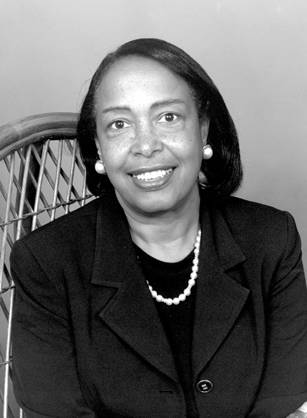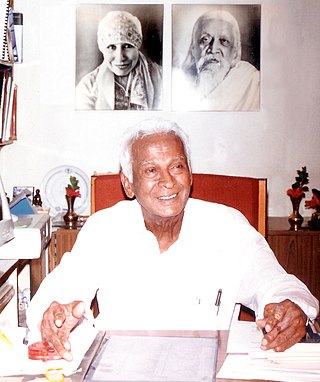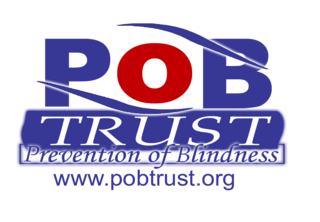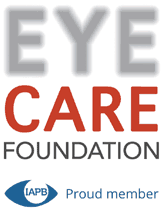Related Research Articles

Orbis International is an international non-profit non-governmental organization (NGO) dedicated to saving sight worldwide. Its programs focus on the prevention of blindness and the treatment of blinding eye diseases in developing countries through hands-on training, public health education, advocacy and local partnerships. Since 1982, Orbis capacity-building programs have enhanced the skills of 325,000 eye care personnel and provided medical and optical treatment to more than 23.3 million people in 92 countries.

Patricia Era Bath was an American ophthalmologist and humanitarian. She became the first female member of the Jules Stein Eye Institute, the first woman to lead a post-graduate training program in ophthalmology, and the first woman elected to the honorary staff of the UCLA Medical Center. Bath was the first African-American to serve as a resident in ophthalmology at New York University. She was also the first African-American woman to serve on staff as a surgeon at the UCLA Medical Center. Bath was the first African-American woman doctor to receive a patent for a medical purpose. A holder of five patents, she founded the non-profit American Institute for the Prevention of Blindness in Washington, D.C.

Aravind Eye Hospitals is a hospital chain in India. It was founded by Dr. Govindappa Venkataswamy at Madurai, Tamil Nadu in 1976. It has grown into a network of eye hospitals and has had a major impact in eradicating cataract related blindness in India. As of 2012, Aravind has treated nearly 32 million patients and performed 4 million surgeries. The model of Aravind Eye Care hospitals has been applauded and has become a subject for numerous case studies across the world.

Govindappa Venkataswamy, popularly known as Dr V., was an Indian ophthalmologist who dedicated his life to eliminate needless blindness. He was the founder and former chairman of Aravind Eye Hospitals. He is best known for developing a high quality, high volume, low-cost service delivery model that has restored sight to millions of people. Since inception, Aravind Eye Care System has seen over 55 million patients, and performed over 6.8 million surgeries. Over 50% of the organisation's patients pay either nothing or highly subsidised rates. Its scale and self-sustainability prompted a 1993 Harvard Business Case Study on the Aravind model.

Christian Blind Mission (CBM) is an international Christian development organization, committed to improving the quality of life of persons with disabilities in the poorest communities of the world. It is considered one of the world's oldest and largest organizations working in this field.

Surgical Eye Expeditions International, or SEE International, is a nonprofit humanitarian organization based in Santa Barbara, California, that provides accessible vision care services to underserved communities internationally and in the United States. The organization was founded in 1974 by Dr. Harry S. Brown, and it connects over 700 volunteer ophthalmologists and other allied health professionals with host clinic sites around the world. These volunteer medical professionals travel to host clinic sites to participate in sight-restoring programs and educate local doctors to help create sustainable vision care systems in the areas. Its objective is to provide quality eye care and sight-restoring surgeries in communities that are overwhelmed with large populations of individuals who cannot afford, or do not have access to, this form of medical care. Since its establishment, SEE has screened over 4 million individuals and completed over 500,000 surgeries in over 85 countries.

Lifeline Express is a charitable organization that attempts to reduce blindness in China. Since 1997, the organization has operated rainbow-coloured hospital "Eye-Trains," which provide free cataract surgery to patients in rural parts of China. In addition, Lifeline Express promotes ophthalmological training for Chinese doctors, through constructing training centers and inviting foreign doctors to China as consultants, and builds solar hot water systems in remote parts of China.

Distressed Children & Infants International (DCI) is a U.S.-based non-profit organization established at Yale University in 2003 and currently headquartered in Cambridge, Massachusetts.
Sankurathri Foundation (SF) was established in 1989 by Dr. Chandra Sekhar Sankurathri in memory of his wife Manjari, son Kiran and daughter Sarada, who died in the bombing of Air India Flight 182 off the coast of Ireland on 23 June 1985.

The L V Prasad Eye Institute (LVPEI) is an eye-care network, established by Dr. Gullapalli Nageswara Rao, an ophthalmologist, at Hyderabad, in 1986. It is a non-profit, multi-campus, non-governmental institution. With more than 275 eye-care centres in India, it is the largest eye-care network in the world.
Sightsavers is an international non-governmental organisation that works with partners in developing countries to treat and prevent avoidable blindness, and promote equality for people with visual impairments and other disabilities. It is based in Haywards Heath in the United Kingdom, with branches in Sweden, Norway, India, Italy, Republic of Ireland, the United Arab Emirates, and the US.

Prevention of Blindness Trust, also known as the POB Trust and POB, is a project of Pakistan Islamic Medical Association. Prevention Of Blindness Trust was established in July 2000 as a leading volunteer eye care organization with the sole mission of preventing blindness and preserving sight. POB Trust declared exempted from tax Federal Board of Revenue (Pakistan) POB Trust endeavors to develop strategies for prevention and control of blindness and visual impairment. The prime objective of POB Trust is to promote and sustain a global campaign against all forms of avoidable blindness with emphasis on deprived communities. This initiative brings with it a great challenge and an exciting hope for all who work towards this goal. It is also a member of the International Agency for the Prevention of Blindness for the VISION 2030: The Right to Sight.

The Organisation for the Prevention of Blindness is an international non-governmental organisation whose actions today focus exclusively on French-speaking countries in Africa. Their mission is to preserve and restore sight amongst some of the most under-privileged communities in the region. The OPC's principal actions concern blindness prevention, treatment and the elimination of blinding diseases, such as onchocerciasis, trachoma, glaucoma and cataracts as well as formal ophthalmological training.
The Himalayan Cataract Project (HCP) was created in 1995 by Dr. Geoffrey Tabin and Dr. Sanduk Ruit with a goal of establishing a sustainable eye care infrastructure in the Himalaya. HCP empowers local doctors to provide ophthalmic care through skills-transfer and education. From its beginning, HCP responds to a pressing need for eye care in the Himalayan region. With programs in Nepal, Ethiopia, Ghana, Bhutan and India they have been able to restore sight to over 1.4 million people since 1995.

Community ophthalmology was described as a new discipline in medicine promoting eye health and blindness prevention through programs utilizing methodologies of public health, community medicine and ophthalmology in 1978. This new discipline was first proposed by Dr. Patricia E. Bath in 1978 after observations of epidemics rates of preventable blindness among under-served populations in urban areas in the US as well as under-served populations in so called third-world countries.
The Myanmar Eye Care Project (MECP) is focused on improving the delivery of critical eye care services to at-risk populations in Myanmar. Founded in 2002 and staffed entirely by ophthalmologists, it aims to end blindness in Myanmar. Myanmar is one of the poorest countries in Southeast Asia and has the highest rate of blindness in the world. Working with partners and a network of providers, MECP operates clinics that provide routine eye care, acute treatment, and surgeries to Myanmar's poor rural populations. MECP also builds eye care infrastructure in rural communities, trains indigenous physicians and nursing staff, and provides equipment.

Eye Care Foundation (ECF) is an international charity organisation active in over 20 countries in Asia, Africa and Latin-America.
Government support and local innovation has produced rapid improvements in eye care in India. A survey in 1976 found that 1.3% of the population were blind, and this was mostly due to cataract. This motivated government action. The National Program for Control of Blindness was launched, though funding did not match that of higher priority problems such as malaria, tuberculosis, and maternal and child health. By 1986 prevalence had risen to 1.49% and the government decided to allow free imports of ophthalmic equipment and then applied to the World Bank for a loan to support the development of cataract surgery. Evidence of the economic impact of blindness helped to secure funding of $117 million for the seven-year project which was launched in 1995.

The International Agency for the Prevention of Blindness (IAPB) is a global alliance of eye health organisations working for the prevention of blindness and vision impairment. IAPB was established in 1975 to work as an umbrella body for global blindness prevention activities. This agency is a partner of World Health Organization.
Access to cataract surgery is very variable by country and region. Even in developed countries availability may vary significantly between rural and more densely populated areas.